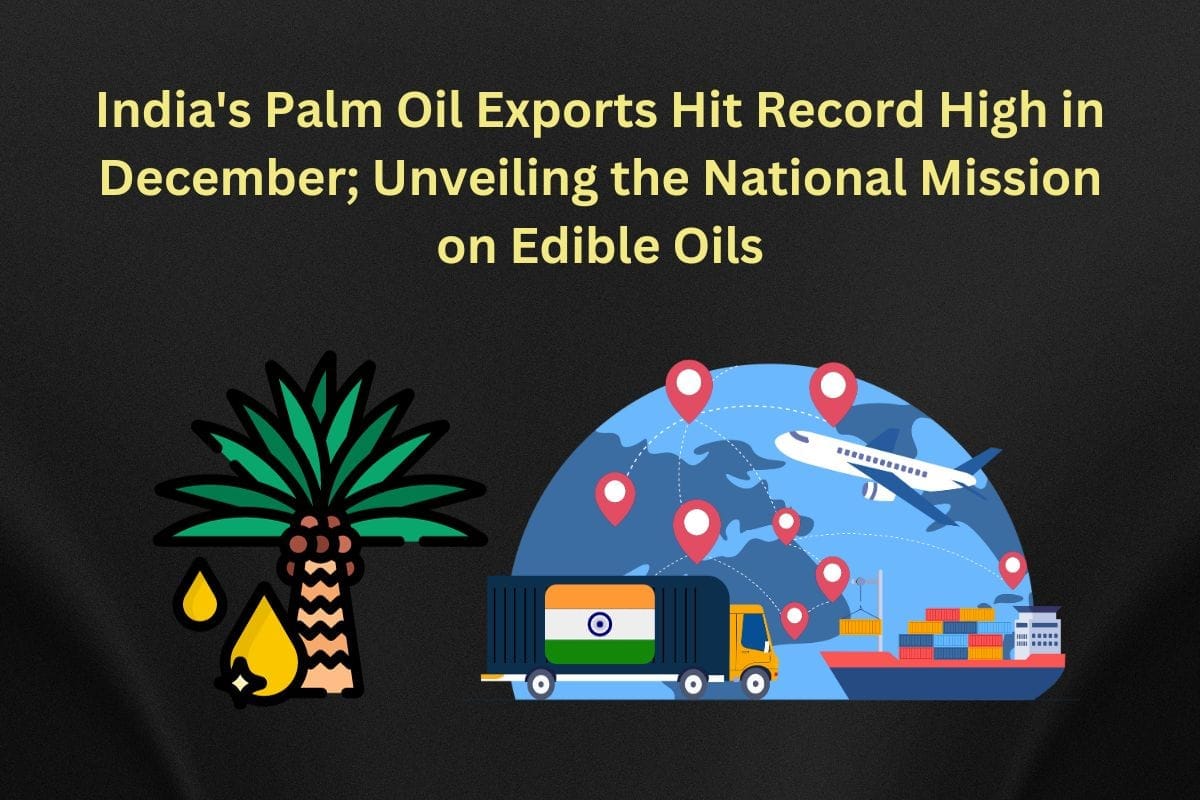
As a part of latest current affairs, December marked a historic achievement for India as its palm oil exports soared to unprecedented levels. As a significant importer of palm oil, predominantly from Malaysia, Indonesia, and Thailand, India has positioned itself prominently in the global market. This surge in palm oil exports coincides with the unveiling of the National Mission on Edible Oils, a centrally sponsored scheme with a strategic focus on the northeastern region.
What is Palm Oil?
Palm oil, native to Central and West African regions, has found widespread cultivation in Malaysia and Indonesia. It serves as a versatile commodity with applications in various industries, from cooking oil and food products to cosmetics and biofuels.
How is Palm Oil Extracted?
Palm oil is extracted from the fruit of oil palm trees. The process involves harvesting the ripe fruit bunches, extracting the oil through mechanical processes, and refining it to produce the final product. The efficiency and versatility of palm oil make it a crucial component in the global market.
Largest Exporters of Palm Oil
Malaysia and Indonesia emerge as the largest exporters of palm oil globally. Their substantial contributions have positioned palm oil as a significant commodity in international trade. India, in turn, stands out as a major importer, with palm oil constituting 15% of the country’s total imports.
National Mission on Edible Oils:
The National Mission on Edible Oils, a centrally sponsored scheme, is a strategic initiative to boost domestic palm oil production. With a substantial financial outlay of 11,040 crores, the mission aims to bring 6.5 hectares of land under palm oil cultivation. The special emphasis on the northeastern region aligns with the broader goal of achieving self-sufficiency in edible oil production.
How Will the National Mission on Edible Oil Benefit India?
The mission holds the potential to transform India into a self-reliant player in edible oil production. By encouraging palm oil cultivation, it not only reduces dependency on imports but also stimulates economic growth, generates employment, and promotes sustainable agriculture practices.
Important Questions for Exams
- What is the significance of India’s record-high palm oil exports in December?
- Name two countries that are the largest exporters of palm oil globally.
- Describe the process of extracting palm oil from oil palm trees.
- How does palm oil contribute to various industries apart from the food sector?
- What percentage of India’s total imports does palm oil constitute?
- What is the National Mission on Edible Oils, and what is its financial outlay?
- Which region receives special focus under the National Mission on Edible Oils?
- How does the mission aim to benefit India’s economy and agriculture sector?
- Discuss the role of Malaysia and Indonesia in the global palm oil trade.
- Explain the importance of reducing dependency on palm oil imports for India’s economic resilience.


Leave a Reply